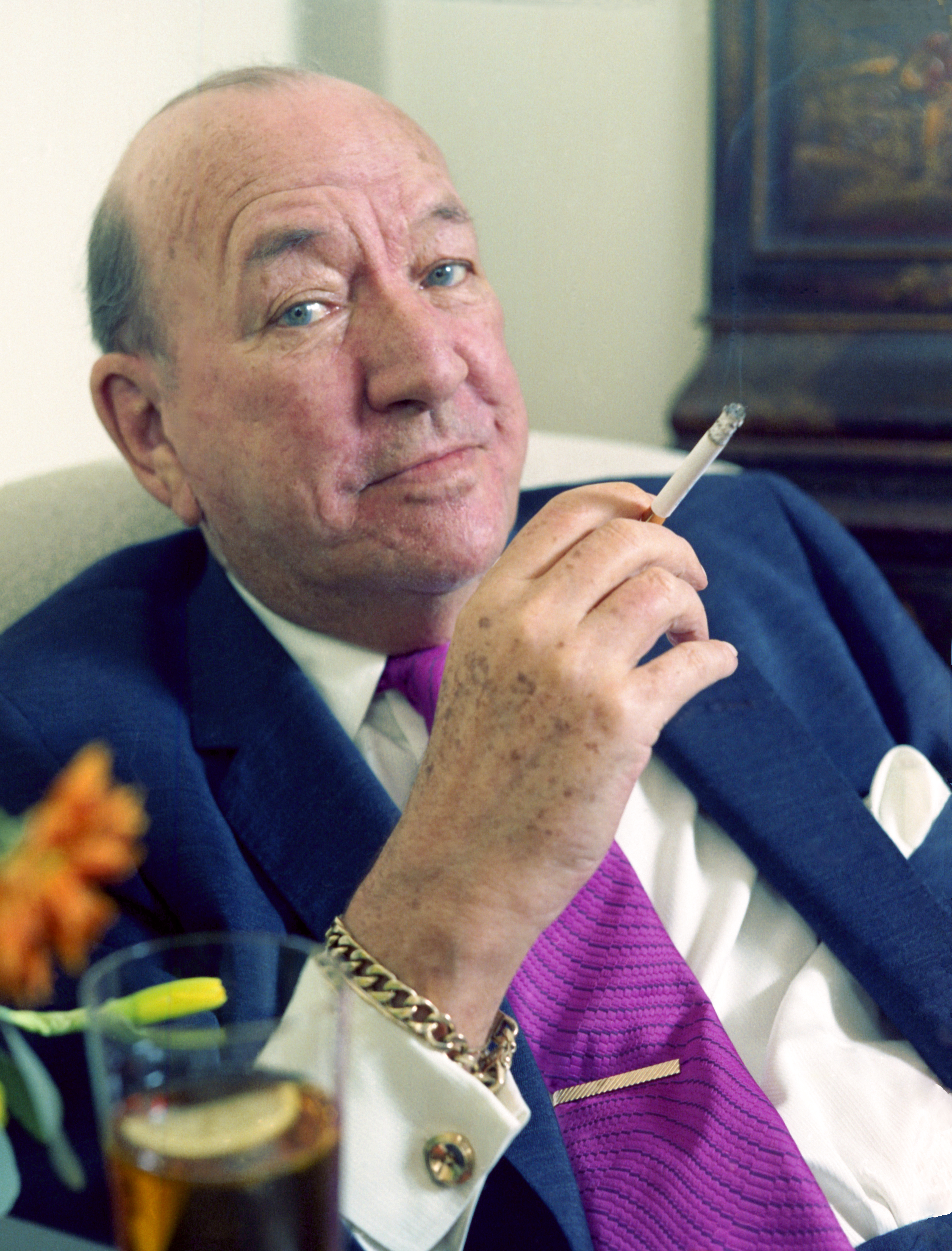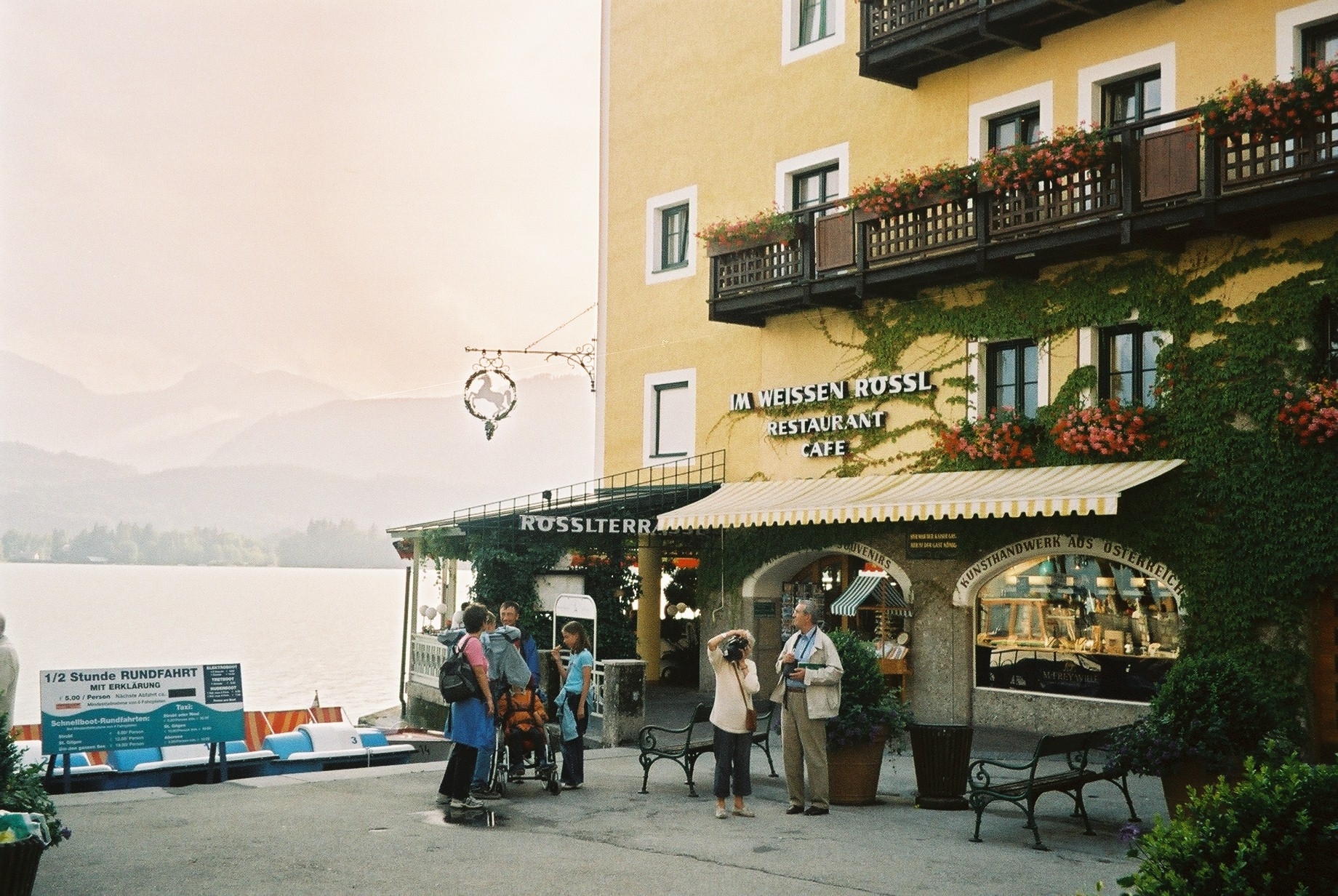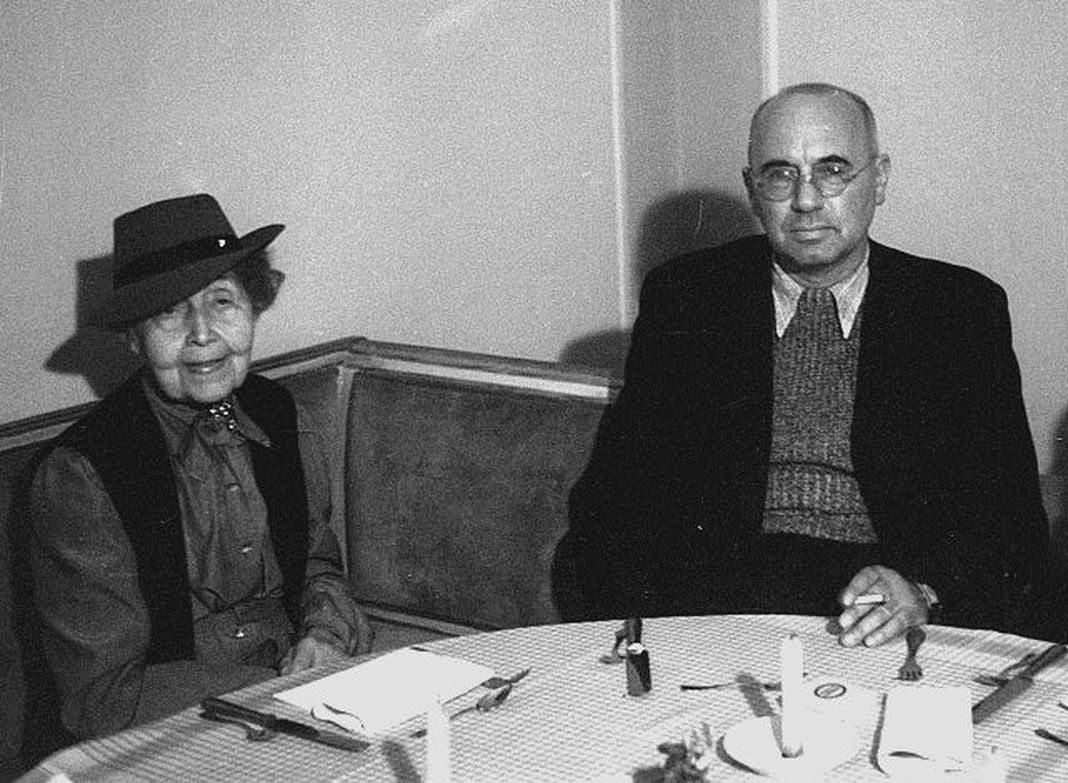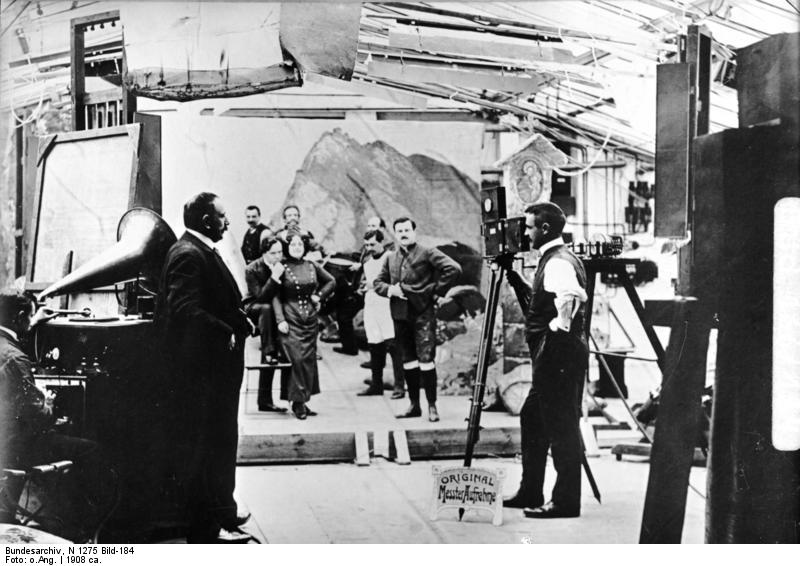|
Ernst Stern
Ernst Stern (1 April 1876 – 28 August 1954) was a Romanian-German scenic designer who, through his collaborations with most of the prominent German directors of the early 20th century, helped define the aesthetic of expressionism in both the theatre and the cinema. Early life Born in Bucharest, Romania, to Jewish parents of Russian, German and Hungarian origin, Stern studied under Nikolaos Gyzis and Franz Stuck at the Academy of Fine Arts, Munich beginning in 1894. Career Stern moved to Berlin in 1905, where Max Reinhardt hired him the next year as a set designer for the Deutsches Theater. He remained Max Reinhardt's main design collaborator until the director's departure in 1921 and designed roughly ninety shows during that time, with notable works including adaptations of William Shakespeare's ''Twelfth Night'' (1907), ''Hamlet'' (1909), and ''A Midsummer Night's Dream'' (1913), Karl Vollmöller's '' The Miracle'' (1911), Reinhard Sorge's ''The Beggar'' (1917), and Henrik I ... [...More Info...] [...Related Items...] OR: [Wikipedia] [Google] [Baidu] |
Romanians
The Romanians ( ro, români, ; dated exonym ''Vlachs'') are a Romance languages, Romance-speaking ethnic group. Sharing a common Culture of Romania, Romanian culture and Cultural heritage, ancestry, and speaking the Romanian language, they live primarily in Romania and Moldova. The Demographic history of Romania#20 October 2011 census, 2011 Romanian census found that just under 89% of Romania's citizens identified themselves as ethnic Romanians. In one interpretation of the 1989 census results in Moldova, the majority of Moldovans were counted as ethnic Romanians.''Ethnic Groups Worldwide: A Ready Reference Handbook By'' David Levinson (author), David Levinson, Published 1998 – Greenwood Publishing Group.At the time of the 1989 census, Moldova's total population was 4,335,400. The largest nationality in the republic, ethnic Romanians, numbered 2,795,000 persons, accounting for 64.5 percent of the population. Source U.S. Library of Congress "however it is one interpreta ... [...More Info...] [...Related Items...] OR: [Wikipedia] [Google] [Baidu] |
Karl Vollmöller
Karl Gustav Vollmöller (or Vollmoeller; 7 May 1878 – 18 October 1948) was a German philologist, archaeologist, poet, playwright, screenwriter, and aircraft designer. He is most famous for the elaborate religious spectacle-pantomime '' The Miracle'' and the screenplay for the celebrated 1930 film ''The Blue Angel'' (''Der blaue Engel''), which made a star of Marlene Dietrich. Life Vollmöller was born in Stuttgart, Württemberg, the son of merchant Robert Vollmöller (1849–1911), who founded his own textile company (''Vollmoeller AG'') in 1881 and, together with his wife Emilie, née Behr (1852–1894), became known as a pioneer of social market economy. His uncle Karl Vollmöller (1848–1922) was a notable Romance philologist and Anglicist; his sister Mathilde Vollmöller (1876–1943) married the painter Hans Purrmann in 1912. He began writing after the early death of his mother in 1894, and went on to study classical philology, art and painting at the universities of Be ... [...More Info...] [...Related Items...] OR: [Wikipedia] [Google] [Baidu] |
Noël Coward
Sir Noël Peirce Coward (16 December 189926 March 1973) was an English playwright, composer, director, actor, and singer, known for his wit, flamboyance, and what ''Time'' magazine called "a sense of personal style, a combination of cheek and chic, pose and poise"."Noel Coward at 70" ''Time'', 26 December 1969, p. 46 Coward attended a dance academy in London as a child, making his professional stage début at the age of eleven. As a teenager he was introduced into the high society in which most of his plays would be set. Coward achieved enduring success as a playwright, publishing more than 50 plays from his teens onwards. Many of his works, such as '' |
The White Horse Inn
''The White Horse Inn'' (or ''White Horse Inn'') (German title: ''Im weißen Rößl'' ) is an operetta or musical comedy by Ralph Benatzky and Robert Stolz in collaboration with a number of other composers and writers, set in the picturesque Salzkammergut region of Upper Austria. It is about the head waiter of the White Horse Inn in St. Wolfgang who is desperately in love with the owner of the inn, a resolute young woman who at first only has eyes for one of her regular guests. Sometimes classified as an operetta, the show enjoyed huge successes in the West End (651 performances at the Coliseum starting 8 April 1931), as a Broadway version, and was filmed several times. In a way similar to ''The Sound of Music'' and the three '' Sissi'' movies, the play and its film versions have contributed to the popular image of Austria as an alpine idyll—the kind of idyll tourists have been seeking for almost a century now. Today, ''Im weißen Rößl'' is mainly remembered for its songs ... [...More Info...] [...Related Items...] OR: [Wikipedia] [Google] [Baidu] |
Großes Schauspielhaus
The Großes Schauspielhaus (Great Theater) was a theatre in Berlin, Germany, often described as an example of expressionist architecture, designed by Hans Poelzig for theatre impresario Max Reinhardt. The structure was originally a market built by architect Friedrich Hitzig, and it retained its external, gabled form. It then became the Zirkus Schumann, a circus arena. It was renovated by Poelzig and reopened in 1919, contained seating for 3500 people. Max Reinhardt wanted to attract a working-class audience. The large size allowed for people who could pay top prices for the best seats to support low-cost seats, in the back of the theater. Painted red, it was a cavernous, domed space and had no balconies, which contributed to its vastness. Its dome and the pillars were decorated with Muqarnas, a honeycombed pendentive ornament, which resembled stalactites. When illuminated, the ceiling's lightbulbs formed patterns of celestial constellations, and the vaulted ceiling took on another ... [...More Info...] [...Related Items...] OR: [Wikipedia] [Google] [Baidu] |
William Dieterle
William Dieterle (July 15, 1893 – December 9, 1972) was a German-born actor and film director who emigrated to the United States in 1930 to leave a worsening political situation. He worked in Hollywood primarily as a director for much of his career, becoming a United States citizen in 1937. He moved back to Germany in the late 1950s. His best-known films include ''The Story of Louis Pasteur'' (1936), ''The Hunchback of Notre Dame'' (1939) and ''The Devil and Daniel Webster'' (1941). His film ''The Life of Emile Zola'' (1937) won the Academy Award for Best Picture, the second biographical feature to do so. Early life and career He was born Wilhelm Dieterle in Ludwigshafen, the youngest child of nine, to factory worker Jacob and Berthe (Doerr) Dieterle. As a child, he lived in considerable poverty and earned money by various means, including carpentry and as a scrap dealer. He became interested in theater early and would stage productions in the family barn for friends and f ... [...More Info...] [...Related Items...] OR: [Wikipedia] [Google] [Baidu] |
Carl Froelich
Carl August Hugo Froelich (5 September 1875 – 12 February 1953) was a German film pioneer and film director. He was born and died in Berlin. Biography Apparatus builder and cameraman From 1903 Froelich was a colleague of Oskar Messter, one of the advance guard of German cinema, for whom initially he worked on the construction of cinematographic equipment. As cameraman for Messter's weekly newsreels he filmed among many other things the aftermath of a train accident on the Berlin elevated railway on 28 September 1908, one of the worst transport disasters of the time. Film director and producer Between 1912 and 1951 he made 77 films. In 1913 Froelich made his directorial debut with ''Richard Wagner (film), Richard Wagner''. In 1920 he founded his own production company, Froelich-Film GmbH, among the productions of which were ''Kabale und Liebe'' (1921), ''Die Brüder Karamasoff'' (1922), and ''Mutter und Kind'' (1924). During these years he often filmed with the actress Henny Po ... [...More Info...] [...Related Items...] OR: [Wikipedia] [Google] [Baidu] |
Richard Oswald
Richard Oswald (5 November 1880 – 11 September 1963) was an Austrian film director, producer, screenwriter, and father of German-American film director Gerd Oswald. Early career Richard Oswald, born in Vienna as Richard W. Ornstein, began his career as an actor on the Viennese stage. He made his film directorial debut at age 34 with ''The Iron Cross'' (1914) and worked a number of times for Jules Greenbaum. In 1916, Oswald set up his own production company in Germany, writing and directing most of his films himself. His pre-1920 efforts include such literary adaptations as ''The Picture of Dorian Gray'' (1917), '' Peer Gynt'' (1919), the once scandalous ''Different from the Others'' (1919) and ''Around the World in Eighty Days'' (1919). Oswald directed nearly 100 films. Some critics have suggested that Oswald was more prolific than talented, but such films as his horror film '' Unheimliche Geschichten'' (1932), produced by no less than Gabriel Pascal, would seem to refute thi ... [...More Info...] [...Related Items...] OR: [Wikipedia] [Google] [Baidu] |
Ernst Lubitsch
Ernst Lubitsch (; January 29, 1892November 30, 1947) was a German-born American film director, producer, writer, and actor. His urbane comedies of manners gave him the reputation of being Hollywood's most elegant and sophisticated director; as his prestige grew, his films were promoted as having "the Lubitsch touch". Among his best known works are '' Trouble in Paradise'', ''Design for Living'', ''Ninotchka'', ''The Shop Around the Corner'', ''To Be or Not to Be'' and '' Heaven Can Wait''. In 1946, he received an Honorary Academy Award for his distinguished contributions to the art of the motion picture. Early life Lubitsch was born in 1892 in Berlin, the son of Simon Lubitsch, a tailor, and Anna (née) Lindenstaedt. His family was Ashkenazi Jewish; his father was born in Grodno in the Russian Empire (now Belarus), and his mother was from Wriezen outside Berlin. He turned his back on his father's tailoring business to enter the theater, and by 1911 was a member of Max Reinhar ... [...More Info...] [...Related Items...] OR: [Wikipedia] [Google] [Baidu] |
Waxworks (film)
''Waxworks'' (german: Das Wachsfigurenkabinett) is a 1924 German silent anthology film directed by Paul Leni. The film encompasses several genres, including a fantasy adventure, a historical film, and a horror film through its various episodes. Its stories are linked by a plot thread about a writer (William Dieterle) who accepts a job from a waxworks proprietor to write a series of stories about the exhibits of Caliph of Baghdad (Emil Jannings), Ivan the Terrible (Conrad Veidt) and Jack the Ripper (Werner Krauss) in order to boost business. The film's format may have influenced later horror anthologies such as the British ''Dead of Night'' (1945) and the Italian ''Black Sabbath'' (1963) by Mario Bava. Critic Troy Howarth mentions "Of all the later horror anthologies, it seems to have had the most direct effect on Amicus' '' Torture Garden'' (1968), which reused the waxworks motif". The film was also known as ''Three Wax Men''. The 1924 silent film supposedly inspired a 1988 "r ... [...More Info...] [...Related Items...] OR: [Wikipedia] [Google] [Baidu] |
Paul Leni
Paul Leni (born Paul Josef Levi; 8 July 1885 – 2 September 1929) was a German filmmaker and a key figure in German Expressionism, making ''Hintertreppe'' (1921) and '' Waxworks'' (1924) in Germany, and '' The Cat and the Canary'' (1927), ''The Chinese Parrot'' (1927), ''The Man Who Laughs'' (1928), and ''The Last Warning'' (1928) in the United States. Life and career Paul Josef Levi was born to a Jewish family in Stuttgart. He became an avant-garde painter at the age of 15, he studied at Berlin's Academy of Fine Arts, and subsequently worked as a theatrical set designer, working for a number of theatres in Berlin (but not with Max Reinhardt). In 1913, he started working in the German film industry designing film sets and/or costumes for directors such as Joe May, Ernst Lubitsch, Richard Oswald, and E. A. Dupont. During World War I, Leni started directing as well with films such as ''Der Feldarzt'' (''Das Tagebuch des Dr. Hart'', 1917), ''Patience'' (1920), ''Die Verschwör ... [...More Info...] [...Related Items...] OR: [Wikipedia] [Google] [Baidu] |
John Gabriel Borkman
''John Gabriel Borkman'' is a 1896 play by the Norwegian playwright Henrik Ibsen. It was his penultimate work. Plot The Borkman family fortunes have been brought low by the imprisonment of John Gabriel who used his position as a bank manager to speculate with his investors' money. The action of the play takes place eight years after Borkman's release when John Gabriel Borkman, Mrs. Borkman, and her twin sister Ella Rentheim fight over young Erhart Borkman's future. Though ''John Gabriel Borkman'' continues the line of naturalism and social commentary that marks Ibsen's work over the preceding thirty years, the final act suggests a new phase for the playwright which was brought to fruition in his final symbolic work ''When We Dead Awaken''. Characters * John Gabriel Borkman * Mrs. Gunhild Borkman * Erhart Borkman, their son * Ella Rentheim, Mrs. Borkman's twin sister * Mrs. Fanny Wilton * Vilhelm Foldal * Frida Foldal, his daughter * Malene, housekeeper Background The Norwegia ... [...More Info...] [...Related Items...] OR: [Wikipedia] [Google] [Baidu] |





